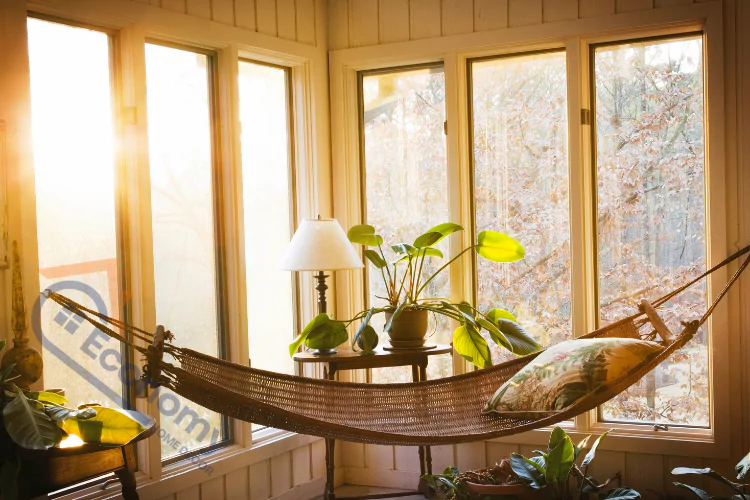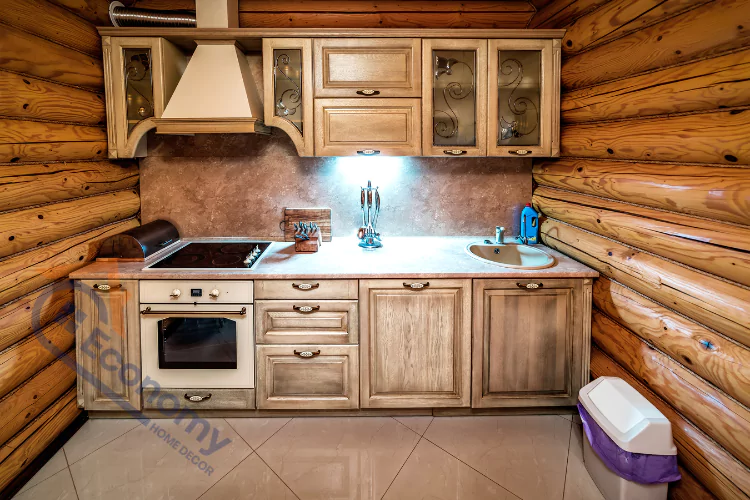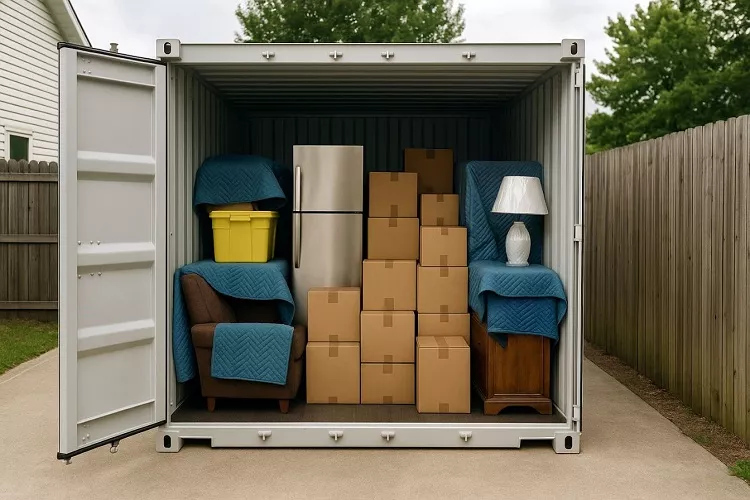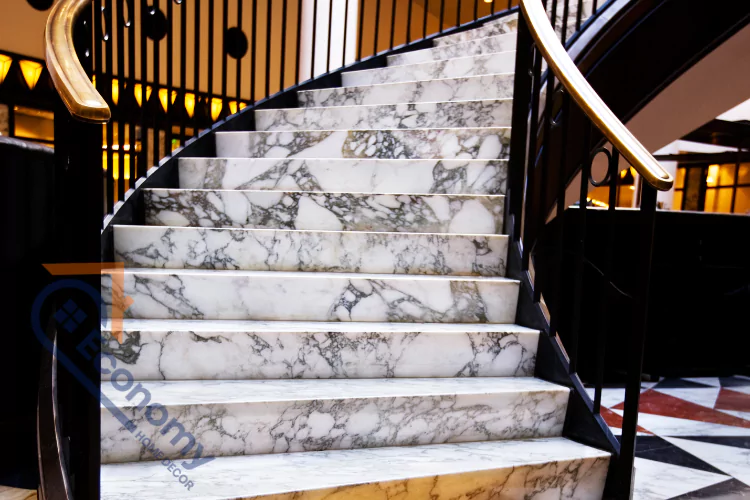A sunroom is one of the most versatile spaces in your home, offering a perfect blend of indoor comfort and outdoor beauty. Whether you have a small enclosed porch or a spacious four-season room, the right sunroom decorating ideas can transform this space into your favorite retreat. From cozy reading nooks to vibrant plant sanctuaries, sunrooms provide endless possibilities for creative expression while connecting you with nature year-round.
The beauty of decorating sunroom ideas lies in their flexibility – you can create anything from a modern minimalist space to a rustic farmhouse haven. With abundant natural light streaming through multiple windows, sunrooms offer unique decorating challenges and opportunities that differ from traditional interior rooms. The key is balancing comfort, functionality, and style while making the most of that gorgeous natural illumination.
Key Takeaways
- Sunrooms offer unique decorating opportunities with abundant natural light
- Furniture selection should balance comfort and weather resistance
- Plants and greenery enhance the indoor-outdoor connection
- Color schemes can range from bright and airy to cozy and intimate
- Budget-friendly options exist for every decorating style
- Seasonal decorating keeps your sunroom fresh year-round
1. Embrace Natural Light with Strategic Furniture Placement
When it comes to interior decorating ideas for sunrooms, furniture placement is crucial for maximizing that beautiful natural light. Position your seating to take advantage of different lighting conditions throughout the day. Morning light is perfect for a breakfast nook with a small bistro table, while afternoon sun creates an ideal spot for reading chairs or a cozy sofa.
Consider the sun’s path when arranging furniture to avoid harsh glare during peak hours. Lightweight, moveable pieces allow you to adjust your layout seasonally. Wicker furniture, rattan chairs, and teak pieces work exceptionally well because they’re both stylish and practical for sun-exposed areas. These materials age beautifully and can handle temperature fluctuations better than traditional indoor furniture.
Don’t forget about creating conversation areas that encourage social interaction. A circular seating arrangement with a central coffee table or ottoman creates an inviting space for entertaining. Small sunroom decorating ideas often benefit from multi-functional furniture like storage ottomans or nesting tables that can be tucked away when not needed.
Optimal Furniture Arrangement Tips
- Place reading chairs near east-facing windows for morning light
- Use lightweight furniture that’s easy to rearrange
- Create multiple seating areas for different activities
- Consider the sun’s path when positioning delicate fabrics
2. Create a Lush Indoor Garden Paradise
Transform your sunroom into a green oasis with carefully selected plants that thrive in bright, indirect light. Sunroom decor ideas often center around creating an indoor garden that blurs the line between inside and outside. Large floor plants like fiddle leaf figs, rubber trees, or bird of paradise create dramatic focal points, while hanging planters add vertical interest without taking up floor space.
Consider creating plant groupings at different heights using plant stands, hanging baskets, and floor planters. This layered approach mimics natural garden settings and creates visual depth. Herbs like basil, rosemary, and mint not only look beautiful but also provide fresh ingredients for cooking. Succulents and cacti are perfect for sunny spots and require minimal maintenance.
The key to successful indoor sunroom decorating ideas involving plants is understanding light requirements. While sunrooms are bright, the glass can filter some UV rays, so choose plants accordingly. Rotate plants regularly to ensure even growth, and consider installing a small watering system or humidity trays for plants that need consistent moisture.
Best Plants for Sunrooms
- High Light: Succulents, cacti, citrus trees
- Medium Light: Pothos, snake plants, ZZ plants
- Hanging Options: String of pearls, trailing ivy, air plants
- Large Statement Plants: Fiddle leaf fig, rubber tree, monstera
3. Design Cozy Reading Nooks and Relaxation Zones
Cozy sunroom decorating ideas often focus on creating intimate spaces within the larger room. A reading nook with a comfortable armchair, good lighting, and a side table for your coffee cup transforms any corner into a personal retreat. Add soft throw pillows, a warm blanket, and a small bookshelf to complete the cozy atmosphere.
Layer different textures to enhance comfort – combine smooth cotton cushions with nubby linen throws and soft wool rugs. The contrast creates visual interest while inviting touch. Consider adding a small ottoman or footstool to elevate comfort levels during long reading sessions.
Lighting is crucial for reading areas, especially during evening hours when natural light fades. Table lamps, floor lamps, or even string lights can provide ambient lighting that complements the natural illumination during the day. Choose warm-toned bulbs that create a cozy atmosphere rather than harsh white light.
Window treatments play a vital role in decorating ideas for sunroom comfort. Light-filtering shades or curtains allow you to control glare while maintaining the airy feel. Bamboo shades or linen curtains add natural texture while providing privacy when needed.
4. Choose Weather-Resistant and Durable Materials
Selecting the right materials is essential for enclosed sunroom decorating ideas that will withstand temperature fluctuations and humidity changes. Sunrooms experience more extreme conditions than typical interior spaces, so durability should be a primary consideration alongside aesthetics.
For furniture, consider materials that can handle sun exposure without fading or cracking. Teak, aluminum, and high-quality synthetic wicker are excellent choices. These materials maintain their appearance over time and require minimal maintenance. Avoid materials like traditional wood that might warp or crack with temperature changes.
Fabric selection is equally important for 4 season sunroom decorating ideas. Solution-dyed acrylic fabrics resist fading and moisture while remaining soft and comfortable. Indoor-outdoor fabrics come in countless colors and patterns, allowing you to achieve any style from coastal to contemporary without sacrificing practicality.
Flooring should be chosen with both beauty and functionality in mind. Tile, luxury vinyl plank, or polished concrete can handle temperature changes and moisture while looking sophisticated. These materials are also easy to clean, which is important in a space that connects to the outdoors.
| Material Type | Best Options | Benefits | Considerations |
|---|---|---|---|
| Furniture | Teak, Aluminum, Synthetic Wicker | Weather-resistant, low maintenance | Higher initial cost |
| Fabrics | Solution-dyed acrylics, Indoor-outdoor textiles | Fade-resistant, easy to clean | Limited texture options |
| Flooring | Tile, LVP, Polished concrete | Durable, temperature stable | Can be cold underfoot |
| Window Treatments | Bamboo, Outdoor curtains | UV protection, natural look | May require replacement |
5. Incorporate Vibrant Colors and Patterns
Modern sunroom decorating ideas often play with bold colors and eye-catching patterns that complement the abundant natural light. Unlike darker interior rooms, sunrooms can handle intense colors without feeling overwhelming. Bright yellows, coral pinks, turquoise blues, and lime greens all work beautifully in sun-filled spaces.
Consider creating a color story that reflects your personal style and the room’s purpose. Coastal themes might incorporate blues, whites, and sandy beiges, while tropical themes could include vibrant greens, oranges, and hot pinks. The key is choosing colors that make you happy and energized when surrounded by natural light.
Patterns add visual interest and personality to your space. Large-scale botanical prints, geometric designs, or classic stripes can define different areas within your sunroom. Mix patterns of different scales – pair large florals with smaller geometric prints, or combine bold stripes with subtle textures.
Don’t be afraid to use color on larger surfaces like walls or major furniture pieces. A bright accent wall can create a stunning focal point, while colorful furniture can serve as functional art. The natural light will help colors appear vibrant and true, so embrace bold choices that might feel too intense in darker rooms.
Color Palette Ideas for Different Styles
- Coastal: Navy blue, white, coral, sandy beige
- Tropical: Emerald green, bright yellow, hot pink, orange
- Modern: Black, white, one bold accent color
- Farmhouse: Sage green, cream, warm browns, soft yellows
6. Maximize Small Spaces with Smart Storage Solutions
Small sunroom decorating ideas require creative thinking to maximize every square foot while maintaining an open, airy feel. Vertical storage solutions are your best friend in compact spaces. Wall-mounted shelves, hanging planters, and tall, narrow storage units draw the eye upward and make ceilings appear higher.
Multi-functional furniture is essential for small spaces. Storage ottomans provide seating and hide clutter, while console tables with built-in shelving can serve as room dividers and display areas. Nesting tables can be separated when needed for entertaining but tucked together to save space during daily use.
Built-in seating with storage underneath maximizes floor space while providing necessary storage for cushions, throws, and seasonal items. Window seats are particularly effective in sunrooms, creating cozy nooks while utilizing space that might otherwise be wasted.
Keep décor proportional to your space size. Large furniture pieces can make small sunrooms feel cramped, while too many small accessories can create visual clutter. Choose fewer, larger pieces that serve multiple purposes and create clear pathways for easy movement.
Consider using mirrors strategically to reflect natural light and create the illusion of more space. A large mirror opposite a window can double the apparent natural light and make your sunroom feel significantly larger.
7. Create Seasonal Flexibility for Year-Round Enjoyment
3 season sunroom decorating ideas need to account for changing weather conditions and varying comfort needs throughout the year. Creating a flexible space that can adapt to different seasons ensures your sunroom remains usable and enjoyable regardless of external conditions.
Invest in lightweight, easily changeable accessories that can transform your space’s mood and function. Throw pillows, blankets, and seasonal plants can shift your décor from bright summer colors to warm autumn tones to crisp winter whites. This approach allows you to refresh your space without major renovations or expenses.
Consider heating and cooling options for 4 season sunroom decorating ideas. Ceiling fans provide air circulation in summer, while portable heaters or electric fireplaces can extend your sunroom’s usability into cooler months. These functional elements can also serve as decorative focal points when chosen thoughtfully.
Storage for seasonal items is crucial for maintaining flexibility. Built-in cabinets, attractive baskets, or decorative chests can hide off-season decorations while serving as functional furniture. This allows you to easily switch between summer’s light, breezy feeling and winter’s cozy, warm atmosphere.
Plan for different lighting needs as daylight hours change. String lights create magical ambiance during long summer evenings, while table lamps provide necessary illumination during shorter winter days. Layer different light sources to accommodate various activities and times of day.
8. Add Personality with Unique Accent Pieces
Decorating a sunroom ideas should reflect your personal style and interests through carefully chosen accent pieces. This is your opportunity to showcase collections, artwork, or unique finds that make your space distinctly yours. The abundant natural light in sunrooms provides an excellent backdrop for displaying special items.
Consider creating gallery walls with weather-resistant art pieces or photographs that can handle humidity fluctuations. Metal wall sculptures, ceramic pieces, or acrylic prints work well in sunroom environments. Avoid paper-based art or items that might be damaged by condensation or temperature changes.
Textiles add warmth and personality to sunroom spaces. Unique throw pillows featuring interesting textures, embroidery, or appliqué work can serve as conversation starters. Hand-woven baskets from your travels, vintage quilts displayed as wall hangings, or antique planters filled with modern succulents all add character while serving functional purposes.
Lighting fixtures offer another opportunity for personal expression. Unique pendant lights, vintage-inspired chandeliers, or artistic table lamps can serve as sculptural elements during the day and provide beautiful illumination in the evening. Choose fixtures that complement your overall design style while handling the sunroom environment.
Unique Accent Ideas by Style
- Bohemian: Macramé wall hangings, vintage textiles, eclectic pottery
- Industrial: Metal sculptures, Edison bulb fixtures, vintage signs
- Farmhouse: Antique tools, mason jar lighting, weathered wood accents
- Contemporary: Abstract art, sleek ceramics, geometric planters
9. Design Multi-Functional Spaces for Maximum Utility
Ideas for sunroom decor should consider how the space will be used throughout the day and week. Multi-functional design allows your sunroom to serve as a morning coffee spot, afternoon workspace, evening entertainment area, and weekend relaxation zone without feeling cluttered or confused.
Designate zones within your sunroom for different activities. A corner with a desk and good lighting can serve as a home office with an inspiring view, while a conversation area with comfortable seating handles social gatherings. Flexible furniture arrangements allow you to adapt the space for different occasions.
Consider rolling carts or mobile storage units that can move between zones as needed. A bar cart can serve morning coffee in one area and evening cocktails in another. Mobile plant stands can be rearranged to create privacy screens or open up space for entertaining.
Technology integration should be subtle but functional. Hidden outlets allow for laptop use or device charging without cluttering the visual space. Bluetooth speakers built into planters or disguised as decorative objects provide ambient music without interrupting the natural aesthetic.
Think about transitions between different functions. Folding screens, curtain panels, or large plants can create temporary divisions when privacy or focus is needed, then be moved aside for more open layouts during entertaining.
10. Incorporate Budget-Friendly DIY Projects
Sunroom decorating ideas budget solutions can create stunning results without breaking the bank. DIY projects allow you to customize your space while saving money and adding personal touches that reflect your creativity and style. Many effective sunroom decorations can be made from inexpensive materials with basic crafting skills.
Create custom planters from various containers – large ceramic bowls, vintage wooden crates, or even repurposed household items can become unique plant holders with proper drainage. This approach allows you to achieve a cohesive look while accommodating plants of different sizes and needs.
Window treatments are another area where DIY approaches shine. Simple panels of outdoor fabric sewn into curtains, bamboo shade makeovers with decorative trim, or creative valances from natural materials can provide privacy and style at a fraction of custom treatment costs.
Furniture makeovers can transform thrift store finds into perfect sunroom pieces. A coat of weather-resistant paint, new cushions made from outdoor fabric, or added storage features can turn inexpensive furniture into exactly what your space needs.
Lighting projects offer dramatic impact for minimal investment. String lights arranged creatively, mason jar lanterns, or painted lamp shade updates can transform your sunroom’s evening ambiance without requiring electrical work or expensive fixtures.
Budget-Friendly DIY Project Ideas
- Plant Holders: Rope-wrapped containers, painted tin cans, woven baskets
- Lighting: Mason jar chandeliers, string light displays, painted lampshades
- Storage: Decorated wooden crates, fabric-covered boxes, rope baskets
- Art: Pressed flower frames, painted canvas, natural material collages
11. Blend Indoor Comfort with Outdoor Aesthetics
The magic of decorating ideas for a sunroom lies in successfully merging the comfort of indoor living with the beauty of outdoor elements. This balance creates spaces that feel like natural extensions of your garden while providing the protection and amenities of interior rooms.
Natural materials play a crucial role in achieving this blend. Wood, stone, rattan, and other organic materials create visual continuity with outdoor elements while providing indoor functionality. These materials age gracefully and develop character over time, enhancing the authentic outdoor feeling.
Bring outdoor elements inside through creative displays. Collections of interesting stones, driftwood sculptures, or seasonal branches in tall vases connect your sunroom to the changing natural world outside. These elements cost nothing but provide dynamic, ever-changing décor that reflects the seasons.
Consider the view from your sunroom when making decorating decisions. Colors and styles that complement your garden or outdoor space create seamless transitions between indoor and outdoor areas. If your garden features cool blues and whites, echoing these colors in your sunroom creates visual harmony.
Water features can enhance the outdoor feeling while providing soothing sounds that mask traffic noise or other distractions. Small tabletop fountains, wall-mounted water features, or even aquariums can add the peaceful sound of moving water that’s often associated with outdoor spaces.
12. Address Privacy and Light Control Needs
Sunroom curtains decorating ideas must balance the desire for natural light with needs for privacy and glare control. The abundance of windows in sunrooms creates unique challenges that require thoughtful solutions to maintain comfort while preserving the space’s airy, open feeling.
Layered window treatments provide maximum flexibility for different situations and times of day. Sheer panels allow light while providing daytime privacy, while heavier curtains or shades can be added for evening privacy or to block harsh afternoon sun. This system allows you to adjust light levels throughout the day as conditions change.
Top-down, bottom-up cellular shades offer an excellent solution for sunrooms, allowing you to maintain views and upper light while providing lower privacy. These shades also provide insulation benefits that can help with temperature control in three-season rooms.
Consider automated solutions for hard-to-reach windows or frequently adjusted treatments. Motorized blinds or curtains can be programmed to adjust throughout the day, maintaining optimal light conditions without requiring manual adjustment of multiple windows.
Alternative privacy solutions include frosted window film, decorative screens, or strategically placed tall plants. These options provide privacy without completely blocking light, maintaining the bright, airy feeling that makes sunrooms special.
Window Treatment Options for Different Needs
| Need | Solution | Benefits | Best For |
|---|---|---|---|
| Privacy | Cellular shades, curtain panels | Adjustable, various opacity levels | Urban settings |
| Glare Control | Solar screens, UV filtering film | Reduces heat and glare | South-facing rooms |
| Insulation | Thermal curtains, cellular shades | Energy efficiency | 3-season rooms |
| Style | Bamboo shades, decorative panels | Natural look, various styles | All sunroom types |
13. Create Themed Spaces for Different Moods
Beach sunroom decorating ideas and other themed approaches allow you to create immersive environments that transport you mentally to your favorite places. Themed sunrooms can serve as daily escapes from stress while reflecting your personal interests and travel experiences.
Coastal themes are naturally suited to sunrooms with their emphasis on light, natural materials, and relaxed atmospheres. Incorporate weathered wood furniture, rope details, sea glass colors, and nautical accessories. Shells, driftwood, and coral collections can serve as decorative elements that reinforce the beach theme without becoming overwhelming.
Farmhouse sunroom decorating ideas emphasize comfort, practicality, and connection to agricultural traditions. Vintage metal signs, mason jar lighting, galvanized planters, and weathered wood accents create authentic farmhouse appeal. Herb gardens in vintage containers and comfortable seating with homespun textiles complete the rustic, welcoming atmosphere.
Rustic sunroom decorating ideas celebrate natural materials and handcrafted elements. Log furniture, stone accents, Native American textiles, and wildlife-themed accessories create cabin-like retreats perfect for reading or contemplation. These themes work particularly well in wooded settings where the sunroom can blend with natural surroundings.
Tropical themes embrace bold colors, lush plants, and exotic materials. Bright textiles, bamboo furniture, palm plants, and colorful birds or butterfly accessories create vacation-like atmospheres year-round. These themes are especially effective in creating cheerful winter retreats during darker months.
14. Plan for Different Activity Zones
Ideas for decorating a sunroom should consider the various ways you’ll use the space throughout the day and week. Creating distinct zones for different activities maximizes your sunroom’s functionality while maintaining an organized, purposeful layout that supports multiple uses.
Dining zones require easy-to-clean surfaces and comfortable seating that encourages lingering over meals. A breakfast nook with built-in seating and storage provides space efficiency while creating an intimate atmosphere for morning coffee or casual meals. Consider views and morning light when positioning dining furniture.
Work zones need good lighting, comfortable seating, and minimal distractions. Position desk areas to take advantage of natural light without creating screen glare. Include storage for office supplies and consider acoustic treatments if phone calls or video conferences will be common.
Exercise or yoga zones require clear floor space and storage for equipment. Mirrors can enhance the sense of space while allowing you to check form during workouts. Consider flooring that provides cushioning and traction for safe movement.
Entertainment zones need flexible seating arrangements and possibly entertainment equipment. Consider how furniture can be rearranged for different group sizes and activities. Built-in features like bars or game table storage can support various entertainment options.
Zone Planning Considerations
- Traffic Flow: Ensure clear pathways between different areas
- Natural Light: Match activities to optimal lighting conditions
- Storage: Each zone should have nearby storage for related items
- Flexibility: Design zones that can adapt for different uses
15. Maintain and Seasonal Care for Longevity
Sunroom decorating ideas on a budget should include planning for maintenance and seasonal care that will protect your investment and keep your space looking beautiful year-round. Proper care prevents costly replacements and ensures your sunroom remains an inviting retreat for years to come.
Develop seasonal maintenance routines that address the unique challenges sunrooms face. Spring cleaning should include deep cleaning of windows, inspection of weather seals, and assessment of any winter damage to furniture or accessories. This is also the perfect time to refresh plant selections and update seasonal decorations.
Summer maintenance focuses on UV protection and temperature control. Rotate furniture and accessories periodically to prevent uneven fading, and consider additional sun protection for particularly vulnerable items. Monitor plants for heat stress and adjust watering schedules as needed.
Fall preparation involves weatherproofing for three-season rooms and preparing heating systems for year-round spaces. This is an excellent time to store delicate accessories that might not survive temperature fluctuations and to add cozy elements for winter comfort.
Winter care in heated sunrooms includes monitoring humidity levels and adjusting plant care for lower light conditions. In unheated spaces, protect furniture with covers and remove items that could be damaged by freezing temperatures.
Document what works and what doesn’t in your sunroom throughout the year. Keep notes about which plants thrive, which furniture arrangements work best for different seasons, and which maintenance approaches are most effective. This information will guide future decorating decisions and help you create an increasingly perfect space over time.
Conclusion
Creating the perfect sunroom requires balancing style, comfort, and practicality while embracing the unique opportunities these light-filled spaces provide. From small sunroom decorating ideas that maximize every square foot to large sunroom decorating ideas that create multiple activity zones, the key is understanding how your space will be used and choosing elements that support those activities while expressing your personal style.
Remember that sunrooms are living spaces that should evolve with your needs and preferences. Start with foundational elements like durable furniture and effective window treatments, then layer in personality through plants, accessories, and seasonal updates. Whether you’re working with a tight budget or have more flexibility, focus on creating a space that brings you joy and connects you with the natural world outside.
The most successful sunroom designs embrace the indoor-outdoor nature of these special spaces, using natural materials, weather-resistant furnishings, and flexible layouts that can adapt to different seasons and uses. By planning thoughtfully and maintaining regularly, your sunroom can become the most beloved room in your home – a bright, beautiful retreat that enhances your daily life regardless of the weather outside.
Frequently Asked Questions
Q: What type of furniture works best in sunrooms? A: Weather-resistant materials like teak, aluminum, and high-quality synthetic wicker work best. These materials can handle temperature fluctuations and UV exposure while maintaining their appearance over time.
Q: How do I prevent furniture from fading in my sunroom? A: Use UV-filtering window treatments, rotate furniture periodically, and choose solution-dyed fabrics that resist fading. Positioning furniture away from direct sun during peak hours also helps.
Q: What plants are best for sunrooms? A: Choose plants based on your specific light conditions. Succulents and citrus trees love high light, while pothos and snake plants prefer medium light. Always consider your local climate and seasonal changes.
Q: How can I make a small sunroom feel larger? A: Use light colors, mirrors to reflect natural light, vertical storage solutions, and multi-functional furniture. Keep pathways clear and choose furniture proportional to your space size.
Q: Do I need special window treatments for sunrooms? A: Yes, sunrooms benefit from treatments that can control glare and provide privacy while maintaining the bright, airy feeling. Cellular shades, bamboo blinds, or layered curtain systems work well.
Q: How much should I budget for decorating a sunroom? A: Sunroom decorating costs vary widely based on size and desired features. Basic furnishing can start around $2,000-$5,000, while complete renovations might range from $10,000-$25,000 or more.
Q: Can I use regular indoor furniture in my sunroom? A: Regular furniture can work in fully enclosed, climate-controlled sunrooms, but may not withstand temperature fluctuations and humidity in three-season rooms. Weather-resistant furniture is generally a better long-term investment.
Q: What’s the difference between decorating a 3-season vs 4-season sunroom? A: Four-season rooms can use more traditional indoor furnishings since they’re climate-controlled, while three-season rooms need furniture and accessories that can handle temperature and humidity changes.







